SEARCH






|
|
|
|


by Editor Peter Davidson
Published the 7th of August 2020
What I see doesn't relate much to what you see.
You see? No, of course not.
What we think we see, in scientific terms, is an illusion anyway.
Much as reality itself might be an illusion. (I get a headache thinking about these things, so try not to, too often).
But if we ARE living in a computer simulation (as some scientific theories say is not entirely out of the question) we are certainly living in the photographic equivalent. Except, of course, for those ever so slightly insane retro-photographers and their films and wet plates. They resolutely, almost gleefully, still live in the BDE (Before Digital Era).
Most of us, however, live in the DE. But I'm seriously thinking of going back to living in the good old BDE.
Why? Well, I'll give one small example. There I was, one fine day, minding my own business, tripod set up and a fancy and complicated digital camera fitted with a suitably heavy and expensive lens pointed at a fine landscape.
I'd not taken a single frame before a young couple appeared and the male half mentioned what a nice view point I had chosen. He then preceded to take a picture with his phone, placing it in the same position as my lens.
I then watched his thumbs dance over his device, a small sliver of glass and chrome thing held lightly in his hands. Seemingly seconds later he announced: 'Cool, thirty people already like this! and proudly showed his girlfriend the resulting picture.
'Ahh sooo nice,' she breathed in awe, 'Let me share that on my IG & FB feeds!'
Her own thumbs then danced in another blur of movement on yet another sparkling chrome and glass device (I'm guessing this part because whatever the device, it was mostly hidden beneath decorative pink butterflies and hearts). She then beamed at her boyfriend with frank and adoring lust, presumably because of his brilliant creativity. Which made me slightly nervous as well as envious.
'What do you think?' he asked, turning to me and away from the heat of her adoration just long enough to show me his phone screen.
I looked and saw a dramatic scene of vivid colour and wierd digital effects that seemed to dance over an image that only vaguely resembled the landscape before us. I peered closer. Were those butterflies? I don't remember seeing any actual butterflies in the landscape? But yes, there they were. Many of them. All flitting delightfully about. Sorcery! The 'like' counter on the picture was spinning up through the gears like a Formula One engines rev counter. (Those racing cars that still use old-fashioned ICE, that is). I had to admit the picture looked very pretty and dramatic.
'Good luck with your shot,' he offered with the hint of a smug smile, and left. Walking off into the sunset like an artistic God, complete with adoring girlfriend hanging onto his arm and every word.
'Kant...' I heard myself mutter, the philosopher Immanual Kant having suddenly sprung to mind.
I turned back to my camera feeling a little bewildered. He had, before I'd managed a single shot, taken his picture, post-processed it into a masterpiece, published it and become an instant world-wide artistic hero who then also got the girl. I, on the other hand, had simply gotten rather damp from hanging about too long near a river, had no picture as yet and certainly no girl, just the beginings of a cold.
I was reminded of a picture I once took of an elderly photographer who was using an old bellows folding camera back when I was young and brash and using what was then, modern gear. I'd snapped his portrait with a 35mm SLR quick as you like and left him looking, in retrospect, just as bewildered as I must have looked myself, today.
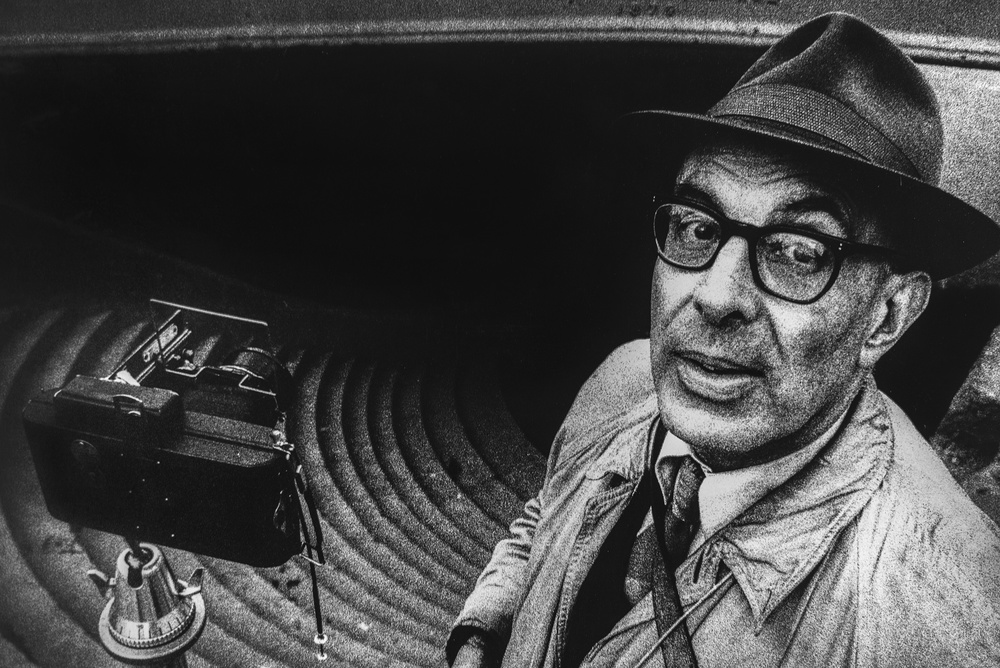
'The Photographer' by Peter Davidson
Being bloody-minded, I still took MY picture anyway. But I knew by the time I had got home, dried off, warmed up, downloaded the files to the computer, messed around with the image and finally posted it up somewhere for oh, maybe half a dozen people to view, another image of the same scene would be viewed and adored by thousands, if not millions. This got me thinking... and as I've mentioned before, thinking always gives me a headache. And yes, I could feel one humdinger coming on right now.
What, exactly, do we see in this post DE, era?
I suspect 90% of people today view a photograph not as a photograph but as an image seen for a brief second on a smallish digital display device in their hands. And exactly how this device is set up by the user can determine to a very great deal, how this image appears. My (or your) calibrated fancy monitor and any sophisticated digital camera's quality... all can all be negated by someone who simply prefers to view images, for instance, with the brightness of their device set at minimum. Or set to maximum colour vibrancy. Or set to monochrome. People generally don't care about what we, as photographers, value most. My niece once complained to me that all my images were too dark. (I was confused, but there's nothing unusual in that). The answer, it turned out after a lot of head scratching on my part, was that she likes her iPad screen set at minimum brightness). So yes, my images were indeed too dark. And at least she noticed they were too dark, but the fault remained mine, not hers.
But then again, the opposite can also be true. Sitting in a friends living room, half a metre away from his 65inch (165cm) super OLED TV whose screen was seemingly set to 'Stun'. Bathed in an ultra vivid neon glow, I felt I needed sunglasses. I certainly needed a cure for headache and sunburn after half an hour...
Now, in the old BDE, that didn't happen. A photograph was a print.
A print processed to appear as the photographer wanted it to appear. You, the viewer, had no choice in the matter of how it looked, or how bright it was. (Well, I suppose you could turn out the room lights...)
In the DE, you often don't see what's intended by the author.
In fact, no one does. Instead, it's all rather dependant on glowing electrons, which are in turn dependant on the type of device and the personal preferences of the viewer. And the standards of the device manufacturer. And the display type. All variables that are completely out of the photographers control.
So I ask you again. What do you see? Do you see what I do? Really?
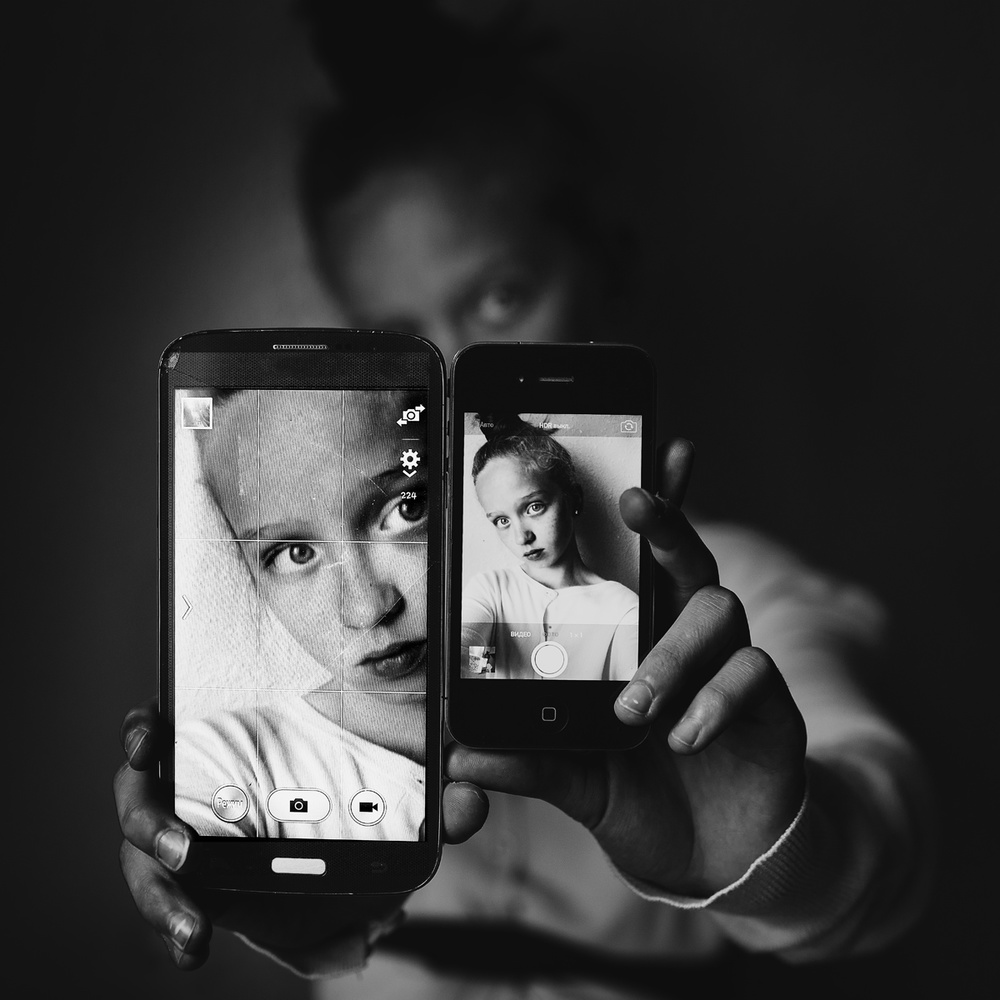
'tee. Portrait' by Kharinova Uliana
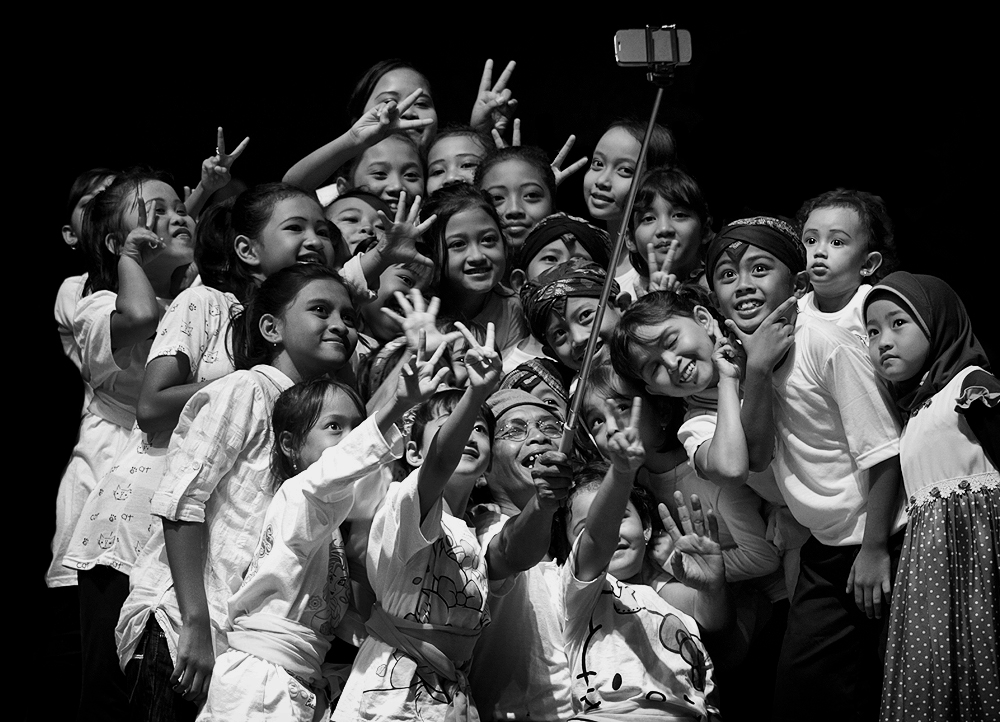
'Selfie'by Sumobagor Caturangga

'Self obsession' by Peter Davidson
 | Write |
 | Jorge Ribeiro Lume PRO A very interesting article that fits the reality in which we live, the search for immediate gratification more emotional than rational, however it is a pity that on sites like 1X.com we do not always have the visibility and the gratification that rewards the good work that is an author ... maybe that already existed 5 years ago on this site ...
|
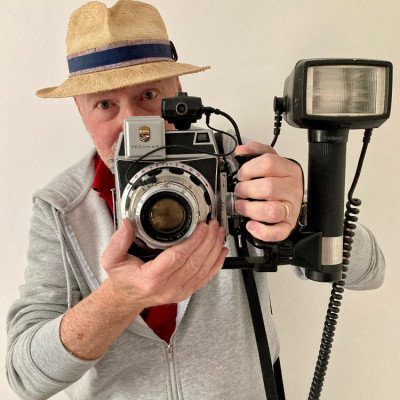 | Peter Davidson CREW Thanks Jorge, and sorry for the late reply. Immediate gratification is indeed an increasing problem. |
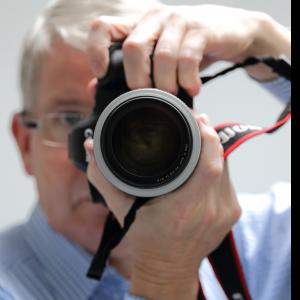 | Wicher Bos CREW Hi Peter, interesting read and personal account of change.
Perhaps it is not all that different than before... think of Gombrich's most important themes in Art and Illusion which is that of perception... and how The Beholder's always has and had (an uncontrolled) share in the art work he observes... it just changing and getting (perhaps even) richer... |
 | Peter Davidson CREW Thanks Wicherbos, and sorry for the late reply. The eye of the beholder wasn't the point. The point was more about how we, as photographers, can present our image to the beholder. Electronics has two major faults, one is that it is an unreliable recreation for the sight of the beholder and two, the technology leads to the beholders complacency and lack of attention. |
 | Wicher Bos CREW Thank you for clarifying Peter! |
 | Wayne Pearson PRO A great article, I really enjoyed your perspective of what do we really see. Every now and agin I reply to another photographers comments about one of my images by saying "thank you, I am happy that you can see what I imagined". If that was actually the reason why they commented, then I feel that I have succeeded in communicating to another person through my photography.
Thank you again Peter and Yvette, I always enjoy your articles. |
 | Peter Davidson CREW Cheers Wayne and thanks for the nice comment! |
 | Yvette Depaepe CREW Thanks for your appreciation, Wayne ;-) |
 | Vladimir Asriyan What do I see ? As before, I see brilliant humor. And old age ... Sorry, my friend. We are getting old and we are leaving. That's what really worries us ...)) |
 | Peter Davidson CREW Not old, maybe a little obsolete. Thanks Vladimir! |
 | Yvette Depaepe CREW Carpe diem, Vlad ! Put aside fears and worries and just go for it ... no matter our age! |
 | Vladimir Asriyan Thank you dear Yvette! I’m not afraid of anything for a long time. I just want to be much everything in time for in this life, but it probably doesn't happen ... ))) |
 | Yvette Depaepe CREW Thanks for this great writing, Peter. Makes me smiling but too, so true! 'Food' to think about... Congrats to the authors of the images documenting it. I wish you all a fine weekend ahead. Cheers, Yvette |
 | Peter Davidson CREW Thanks Yvette! |
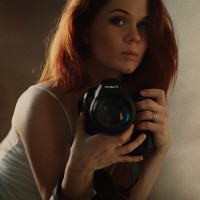 | Kharinova Uliana thank you!!! |
 | Peter Davidson CREW Thank Yvette! |
 | Peter Davidson CREW Opps, wrong comment in wrong place, but thanks for the use of your picture, Kharinova. |